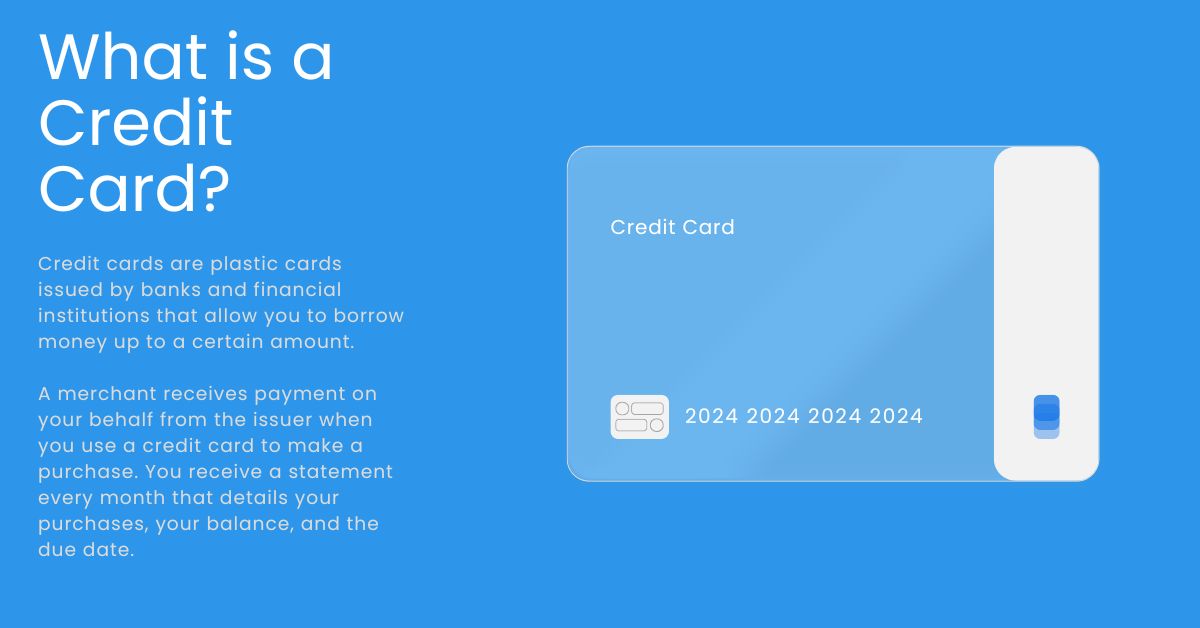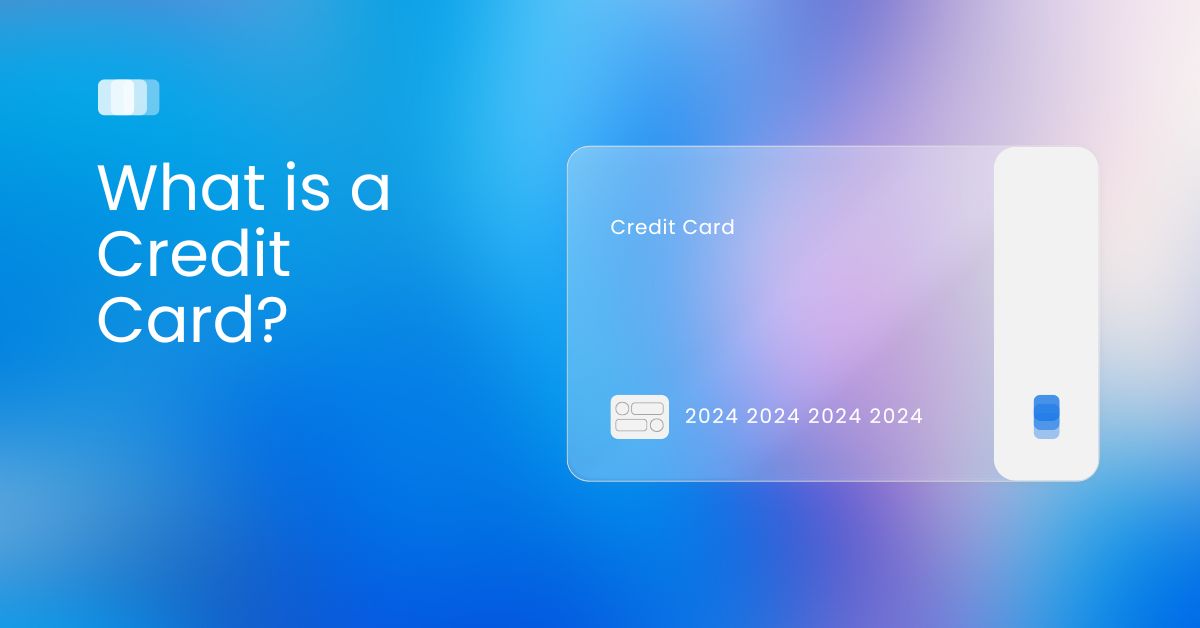A credit card plays an increasingly important role in today’s financial world. Purchases can be made both online and offline. It is important to understand how credit cards work and use them responsibly in order to avoid debt and financial stress. Here, we will explain how credit cards work, their benefits, and potential pitfalls.
What is Credit Cards?

Credit cards are plastic cards issued by banks and financial institutions that allow you to borrow money up to a certain amount. A merchant receives payment on your behalf from the issuer when you use a credit card to make a purchase. You receive a statement every month that details your purchases, your balance, and the due date.
Any unpaid balance will accrue interest, regardless of whether you pay the full balance or a minimum amount. There are many benefits to credit cards, including rewards programs and emergency funds. However, there can also be risks, such as accumulating debt.
How Credit Cards Work?
When you use a credit card, you borrow money from the issuing institution. You are responsible for repaying the borrowed amount after the bank pays the merchant on your behalf.
Each month, you’ll receive a statement detailing your purchases, your balance, and when you’re due to pay. The balance can be paid in full or in a minimum amount. If only the minimum payment is made, interest will be charged on the remaining balance.
There are many benefits to using a credit card online and offline. The cards also offer travel perks, rewards points, and cashback. Using credit cards responsibly will help you avoid debt and high interest rates.
How Does Credit Card Interest Work?
Your Annual Percentage Rate (APR) tells you how much interest you will pay on your credit card balance. Interest is charged yearly on outstanding balances. To get the Daily Periodic Rate (DPR), divide the APR by 365.
The process is as follows:
-
Outstanding Balance: Your outstanding balance is the amount you owe if you don’t pay your full debt by the due date.
-
Daily Interest: Every day, the DPR is added to your outstanding amount.
-
During the payment cycle, interest builds up every day.
-
Added to Balance: The interest that has built up is added to your bill for the following month.
To prevent incurring interest fees, credit cards generally provide a grace period of about 21 to 25 days, allowing you to pay off your entire balance. If you maintain a balance past the grace period, interest will apply to the remaining amount.
Different Types of Credit Cards
There are multiple kinds of credit cards, each crafted to meet diverse preferences and requirements. Here are some of the most common types:
-
Rewards Credit Cards: These credit cards give you cashback or reward points for your purchases. These incentives can be exchanged for a range of goods, services, or vacation opportunities.
-
Travel Credit Cards: These cards are made especially for people who travel a lot. Travel insurance, lounge access, and extra points or miles on travel-related expenses are some of the perks they provide.
-
Cashback Credit Cards: A small percentage of your purchases can be refunded as cash with these cards. You can use this cashback to reduce your credit card payment or have it credited to your account.
-
Low-Interest Credit Cards: When compared to standard credit cards, these cards have a lower interest rate. They are perfect for those who wish to reduce interest costs on a credit card bill.
-
Secured Credit Cards: A security deposit is needed for these cards, and it serves as collateral. Because they gradually raise a person’s credit score, they are appropriate for those with little or no credit history.
-
Store Credit Cards: These cards, which are given out by particular shops, provide special savings and benefits on purchases made there.
-
Balance Transfer Credit Cards: You can use these cards to move money from high-interest credit cards to ones with reduced interest rates. This can help you pay off your debt more quickly and save money on interest.
Selecting a credit card that fits your spending patterns and financial objectives is crucial. When choosing, take into account elements like interest rates, rewards programs, yearly fees, and other bonuses.
If you want to know about credit ratings, you can read this article: Credit Rating: The Key to Unlocking Financial Opportunities
Why Might You Want a Credit Card?
When utilized properly, a credit card can be a useful financial instrument. You might want to think about acquiring one for the following reasons:
1. Building Credit History:
- You may build and raise your credit score with the use of credit cards.
- Lower interest rates and better financial options, such as housing and vehicle loans, can be accessed with a high credit score.
2. Emergency Fund:
- When faced with unexpected financial difficulties, such as losing one’s job, facing medical bills, or needing auto repairs, credit cards can act as a safety net.
3. Rewards and Perks:
- Most credit cards include benefits like airline miles, cashback, or points that can be exchanged for cash back, merchandise, or travel.
- Other benefits offered by certain cards include extended warranties, travel insurance, and rental car insurance.
4. Convenience:
- Credit cards are widely accepted, making it easy to make purchases both online and offline.
- They make it unnecessary to carry about a lot of cash.
5. Budgeting Tool:
- You can successfully manage your finances and keep tabs on your spending with the use of credit cards.
- You can find out where you might be overspending by looking over your monthly statements.
How to Choose a Credit Card?
Your particular requirements and spending patterns must be taken into account when selecting a credit card. Here are some important things to remember:
-
Interest Rate:
- APR (Annual Percentage Rate): This is the annual interest rate charged on your outstanding balance.
- Grace Period: The interest-free period you have to pay your balance in full.
-
Annual Fees:
- While some cards are fee-free, some include yearly fees.
- Compare the annual fee’s cost with the advantages.
-
Rewards Programs:
- Cashback: Recoup a portion of your expenses in cash.
- Points: Earn points that may be used for cash back, items, or trips.
- Travel Rewards: Get points or miles that may be redeemed for lodging, airfare, and other travel-related costs.
- Select a rewards program based on your spending patterns.
-
Credit Limit:
- Although having a larger credit limit has certain advantages, it’s crucial to use it sensibly.
- Choose a limit that works for you by taking your spending patterns into account.
-
Additional Benefits:
- Insurance: Certain cards provide purchase protection, rental car insurance, or travel insurance.
- Concierge Services: Access to personalized assistance for travel, dining, and other services.
- Lounge Access: Complimentary access to airport lounges.
Tips for Choosing the Right Credit Card
- Assess Your Needs: Ascertain the card’s primary purpose (e.g., balance transfers, travel, or daily spending).
- Compare Offers: Examine several cards and contrast their benefits, costs, and attributes.
- Check Your Credit Score: Your chances of being approved and being eligible for better terms can both be increased with a high credit score.
- Read the Fine Print: Recognize the terms and conditions, including the rules of the reward program, fees, and interest rates.
- Use Responsibly: Don’t overspend, pay your payments on time, and maintain a low credit use rate.
You can select a credit card that fits your lifestyle and aids in reaching your financial objectives by carefully weighing these variables.
Credit Card Advantages and Disadvantages
| Advantage | Disadvantage |
|---|---|
| Convenience | Debt Trap |
| Easy to use for purchases | Overspending can lead to debt |
| No need to carry cash | High-interest rates can accumulate quickly |
| Rewards and Perks | Financial Risk |
| Cashback, points, and travel rewards | Potential for identity theft and fraud |
| Emergency Fund | Negative Impact on Credit Score |
| Can be used in emergencies | Late payments or default can damage credit score |
| Budgeting Tool | Temptation to Spend |
| Helps track spending habits | Easy access to credit can lead to impulsive purchases |
If you’re interested in learning more about budget, don’t miss our article What is Budgeting in Finance? A Comprehensive Guide to Financial Planning
Is Credit a Loan?
A credit card is essentially a loan. Using a credit card or other form of credit means borrowing money from a financial institution. This borrowed money can be used to make purchases, and you’re obligated to repay it, often with interest.
Can I Use 100% Limit of Credit Card?
The use of your entire credit card limit is technically possible, but it’s strongly discouraged. A maxed-out credit card can negatively impact your credit score, signaling financial overextension to lenders. A high balance can also result in significant interest charges, making it difficult to repay the debt. To maintain a healthy credit score and avoid unnecessary expenses, use only a portion of your credit limit and pay it off each month.
What is a Credit Score?
Your credit score represents your creditworthiness numerically. You can use this number to determine whether you are likely to repay borrowed money on time.
A credit score is calculated using information from your credit report, such as your payment history, credit utilization, types of credit, and recent credit inquiries. The higher your credit score, the lower your risk of defaulting on loans and credit cards.

